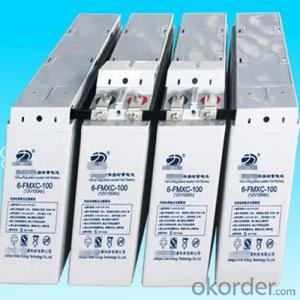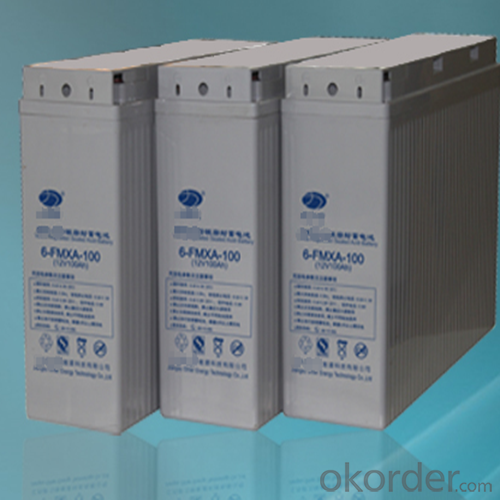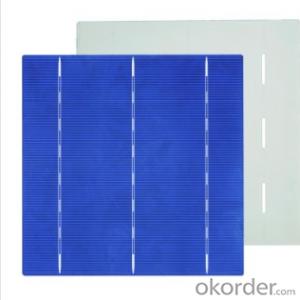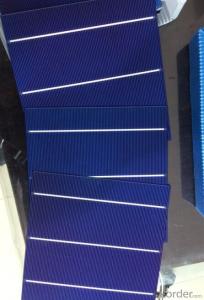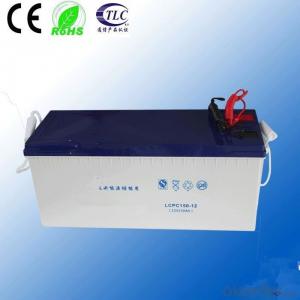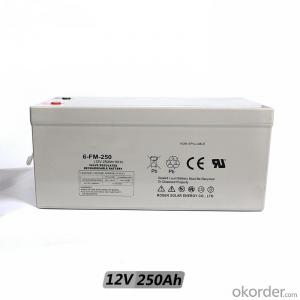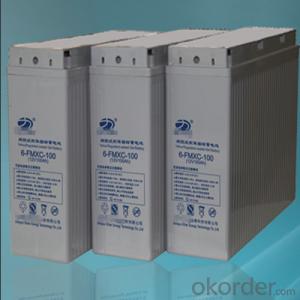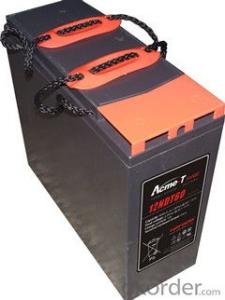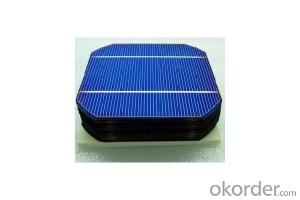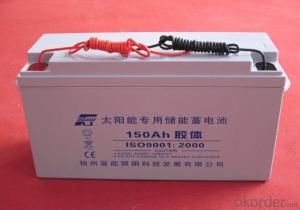Monocrystalline Silicon Solar Cells Communication Lead-Acid Battery FMXC 12V
- Loading Port:
- China main port
- Payment Terms:
- TT OR LC
- Min Order Qty:
- 1 pc
- Supply Capability:
- 1000000 pc/month
OKorder Service Pledge
OKorder Financial Service
You Might Also Like
Structure of Product Descrtption:
What is the product?
The FMXA/FMXC (Front Terminal) Series is especially designed for telecommunication use with 12 years design life in float service. By combining the newly developed paste formula with up-to-date AGM structures, this range features 12 years design life and Front Access connection for fast, easy installation and maintenance. This series is highly suited for telecom applications, UPS systems and other back up applications.
What is the purpose of the product?
· Telecommunication
· Control Equipments
· UPS systems
· Communication Equipments
· Medical Equipments
· Emergency Power Systems
What advantages do products have ?
· 12 years design life at floating condition
· Wide operating temperature range from -15°C to 55°C
· Advanced paste formula with increased recharge efficiency
· Front access terminal with standard width for 19” and 23” ETSI racks
· 30% decreased float current lead to excellent high temperature resistance
· Thick flat plate with high Tin low Calcium alloy
· Low self discharge
· Excellent deep discharge recovery capability
·
Main feature of the product:
*safety and reliable
*environmental friendly and fast delivery
*low self diacharge

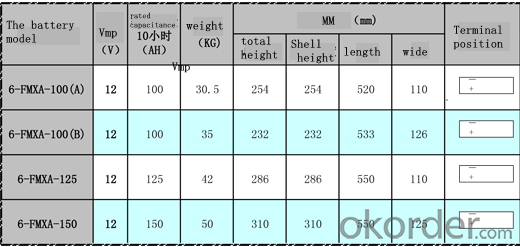
FAQ:
*Question:How long does it can service?
Answer:The service life of it in more than a decade.
*Question:What’s price per watt?
Answer: It’s depends on the quantity, delivery date and payment terms of the order. We can talk further about the detail price issue. Our products is high quality with lower price level.
*Question:Can you tell me the parameter of your solar panels?
Answer:We have different series of cells with different power output, both from c-si to a-si. Please take our specification sheet for your reference.
- Q: Can solar cells be used in greenhouses or agricultural facilities?
- Yes, solar cells can be used in greenhouses or agricultural facilities. Solar panels can be installed on the roofs or walls of these structures to harness the sunlight and convert it into electricity. This renewable energy source can power various operations such as lighting, ventilation, irrigation systems, and even machinery, reducing reliance on fossil fuels and promoting sustainability in the agricultural sector. Additionally, solar cells can help offset energy costs and enhance the overall environmental friendliness of these facilities.
- Q: What is the maximum temperature a solar cell can withstand?
- The maximum temperature a solar cell can withstand varies depending on the specific type and design of the cell. However, most solar cells can typically withstand temperatures up to around 85-90 degrees Celsius (185-194 degrees Fahrenheit) without significant degradation in performance.
- Q: What materials are commonly used in solar cells?
- Some common materials used in solar cells include silicon, cadmium telluride, and copper indium gallium selenide.
- Q: What is the size and weight of a typical solar cell?
- The size and weight of a typical solar cell can vary depending on its intended application and technology. However, a standard silicon-based solar cell is typically square-shaped with dimensions ranging from a few centimeters to around 15 centimeters on each side. In terms of weight, most solar cells are quite lightweight, typically weighing between a few grams to around 100 grams, depending on the size and material used.
- Q: How do solar cells impact energy security?
- Solar cells have a positive impact on energy security as they provide a reliable and sustainable source of electricity. By harnessing the power of the sun, solar cells reduce dependence on finite fossil fuels, increasing energy independence and reducing the risks associated with fluctuating fuel prices and geopolitical conflicts. Additionally, solar energy can be generated locally, reducing the vulnerability of energy supply chains and enhancing resilience in the face of natural disasters or other disruptions. Overall, solar cells play a crucial role in diversifying the energy mix and enhancing energy security for individuals, communities, and nations.
- Q: Can solar cells be used to power remote weather stations?
- Yes, solar cells can be used to power remote weather stations. Solar cells convert sunlight into electricity, providing a reliable and sustainable power source for remote areas where access to the grid may be limited or nonexistent. This makes solar cells an ideal solution for powering weather stations in remote locations, ensuring continuous operation and accurate weather data collection.
- Q: Can solar cells be used to power air conditioning systems?
- Yes, solar cells can be used to power air conditioning systems. However, the efficiency and capacity of the solar cells, as well as the size of the air conditioning system, need to be considered to ensure sufficient power supply.
- Q: Can solar cells be used in commercial buildings?
- Yes, solar cells can be used in commercial buildings. They are increasingly being installed on rooftops and facades of commercial buildings to generate clean and renewable energy. Solar cells help reduce electricity costs and reliance on the grid while also contributing to the overall sustainability and environmental footprint of commercial buildings.
- Q: How long does it take to make a solar cell?
- It only took me 1 day because I had all the required materials ready before I start to make it.
- Q: Can solar cells be used to power data centers?
- Yes, solar cells can be used to power data centers. Solar panels can generate electricity from sunlight, which can be used to power the energy needs of data centers. However, the feasibility and effectiveness of using solar power for data centers depend on various factors such as the size of the data center, the availability of sunlight, energy storage solutions, and the overall energy consumption of the facility.
Send your message to us
Monocrystalline Silicon Solar Cells Communication Lead-Acid Battery FMXC 12V
- Loading Port:
- China main port
- Payment Terms:
- TT OR LC
- Min Order Qty:
- 1 pc
- Supply Capability:
- 1000000 pc/month
OKorder Service Pledge
OKorder Financial Service
Similar products
Hot products
Hot Searches
Related keywords
